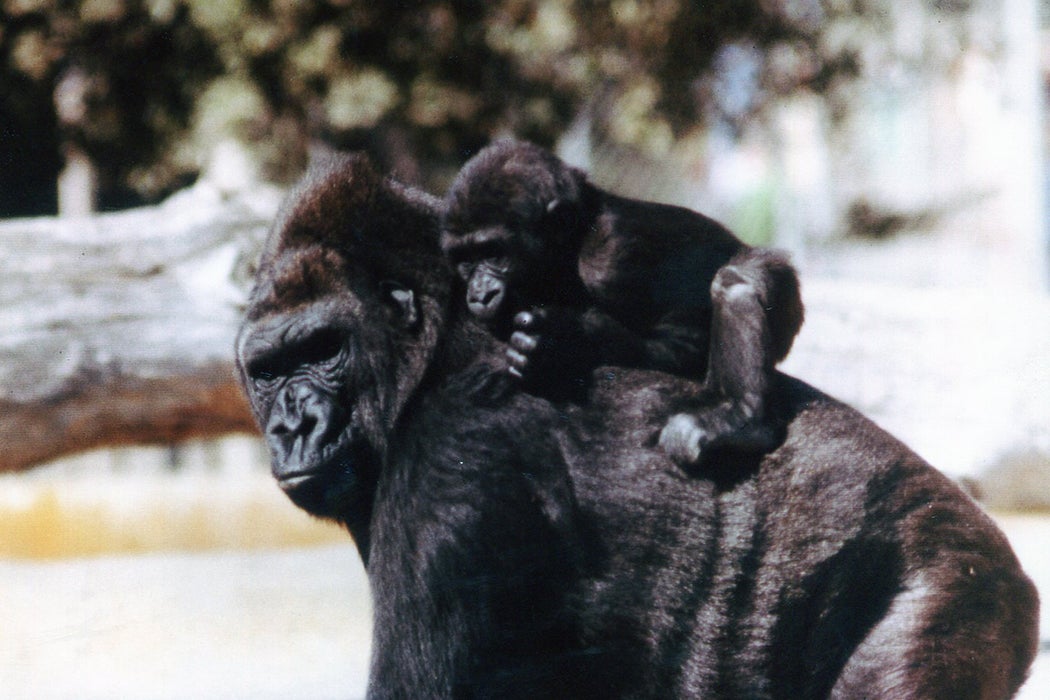This past June, Koko the Gorilla died in her sleep at the age of forty-six. The female lowland gorilla spent almost her entire life at the Gorilla Foundation, where she wowed with her sign language skills. She touched hearts across the globe when she bonded with an orphaned kitten; the world shared in her grief when the kitten died. Koko was an unusual scientific pioneer, leaving behind a wealth of research into the origins of language and the nature of ape communication, but not without some controversy.
Koko was actually the second ape to master sign language. According to Elizabeth Barnwell in the Journal of the Washington Academy of Sciences, the first researchers to study communication in apes attempted to teach English to a chimpanzee, but it didn’t go well. From this doomed experiment many researchers concluded that chimpanzees simply weren’t very smart. Believing that maybe the apes lacked the vocal ability to speak but not the intelligence, a different group opted to teach a new chimp, Washoe, how to sign by forming her hands into the shape of the signs. In this manner, Washoe learned and was able to use scores of signs.
Next came Koko. Many scoffed at the idea of using a gorilla for a language study, as gorillas were believed to be less intelligent than chimps. She was taught verbal words and sign language instruction simultaneously, eventually learning and using hundreds of signs and responding to thousands of spoken words.
But Koko went further than merely signing. She used unique combinations of signs to alter their meaning, which some have described as crude, syntax-free sentences. She was capable of describing her feelings and moods, and sometimes, it seemed, just wanted to talk, starting conversations with her keepers. Most impressively, she taught sign language to another gorilla, Michael, and exchanged unique signs with him that she did not use with handlers. She was deemed to be roughly as intelligent as a human child and many researchers feel that she was truly using language.
Want more stories like this one?
Doubters quickly arose, especially Herbert Terrace, who tried his own communication experiments with a chimpanzee named Nim Chimpsky. As Jean Marx describes in Science, Terrace concluded that Chimpsky didn’t truly use language but was actually copying his handlers. The communication experiments, to Terrace, revealed much about ape learning but said nothing about their linguistic abilities. The controversy grew heated, with Washoe’s trainers at one point threatening to sue Terrace.
The field of ape-human communication barely exists anymore. Since the exact nature of language itself has no firm definition, the controversy may never have a resolution. But Jon Cohen, also writing in Science, argues that what we really gained from Koko is knowledge about gorillas. Language or not, she granted humanity access to an intelligence very different from our own.







